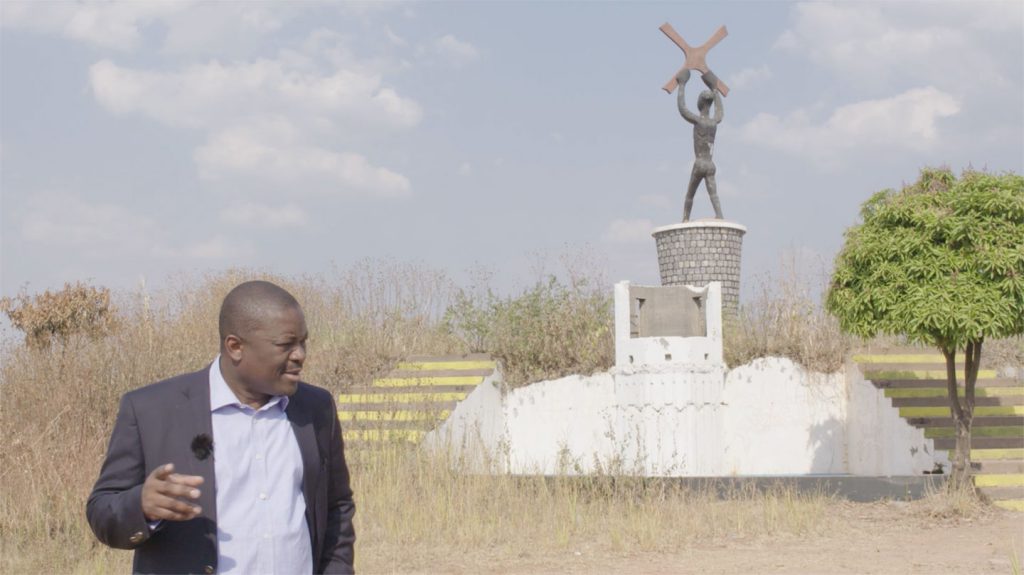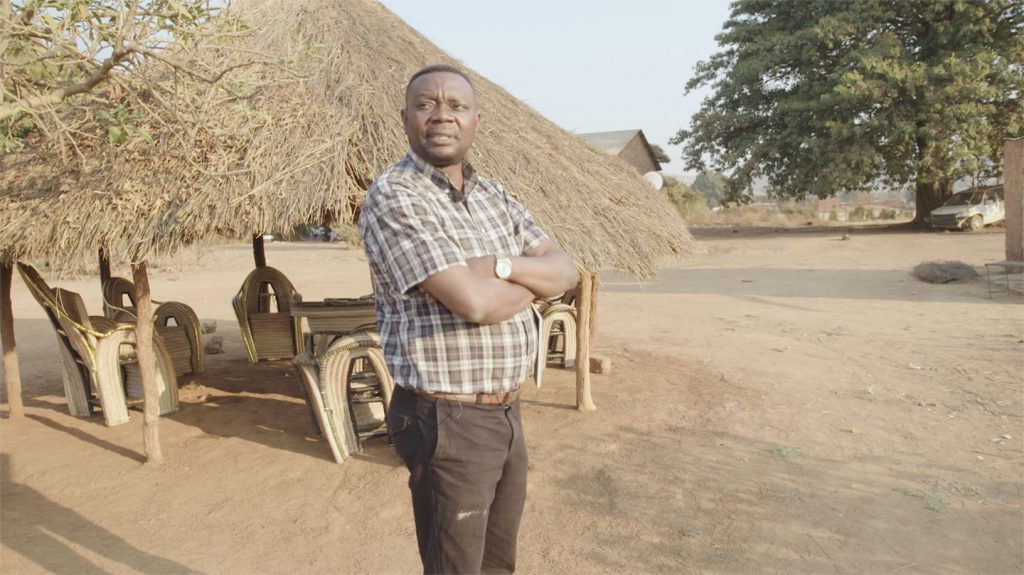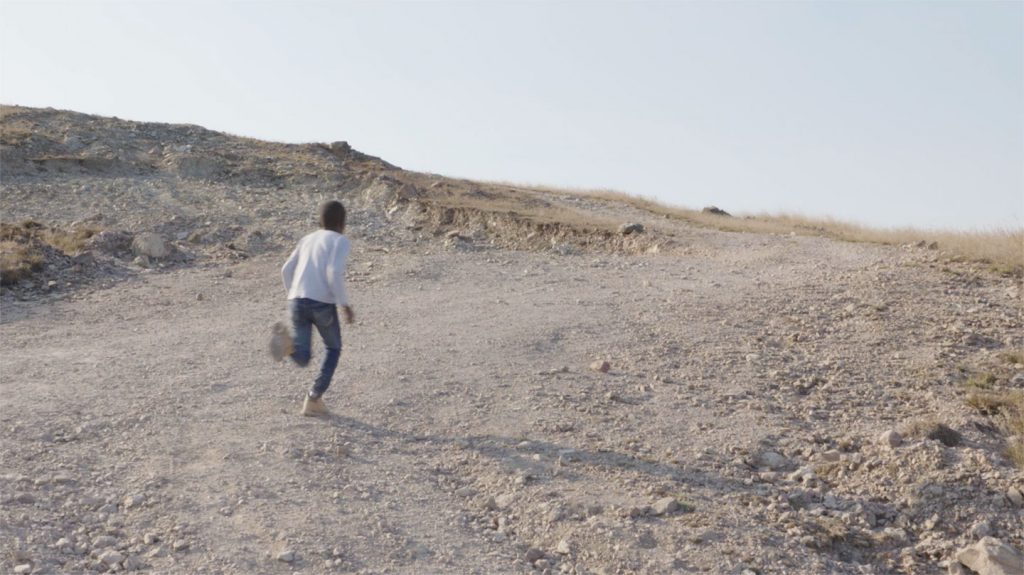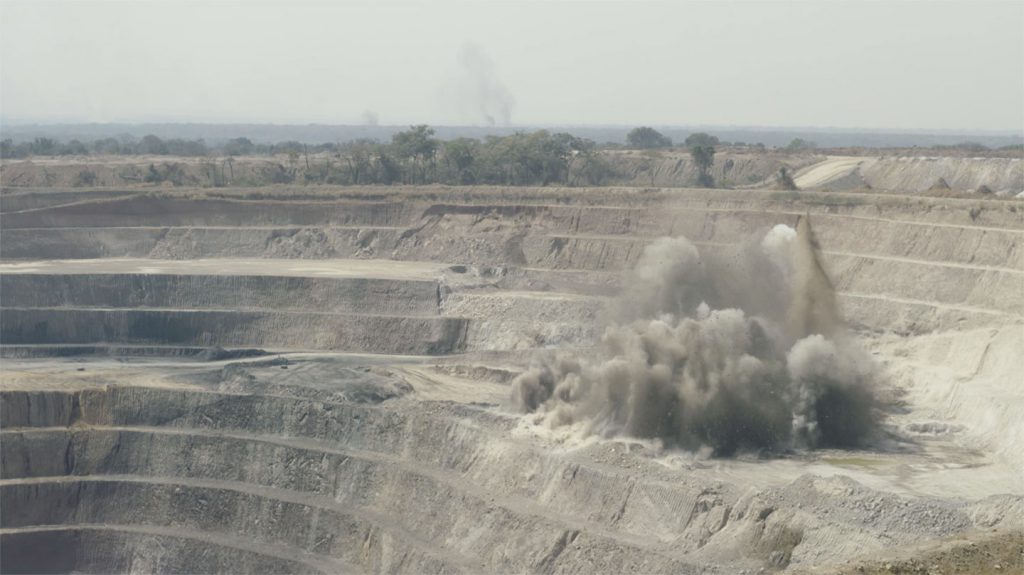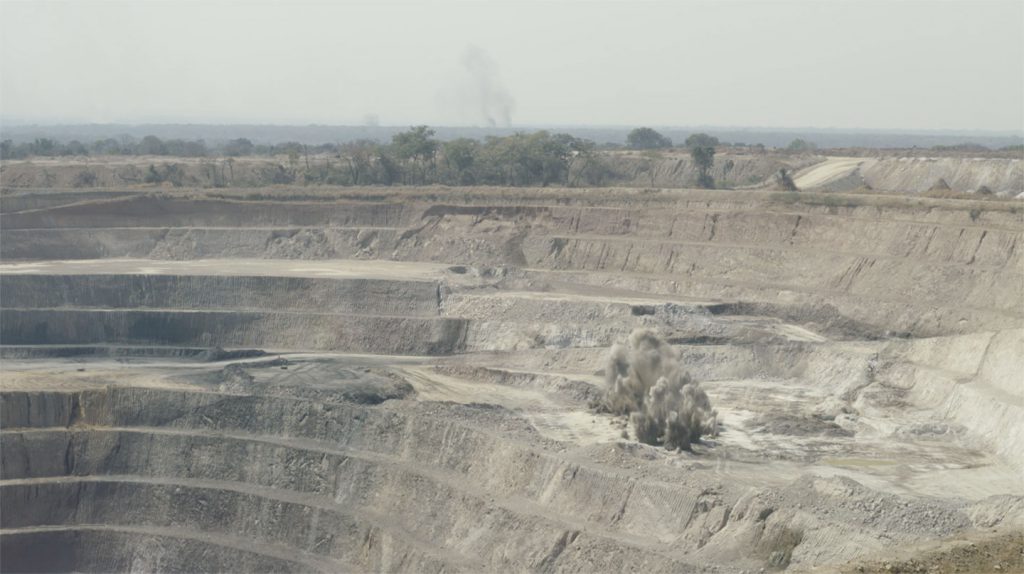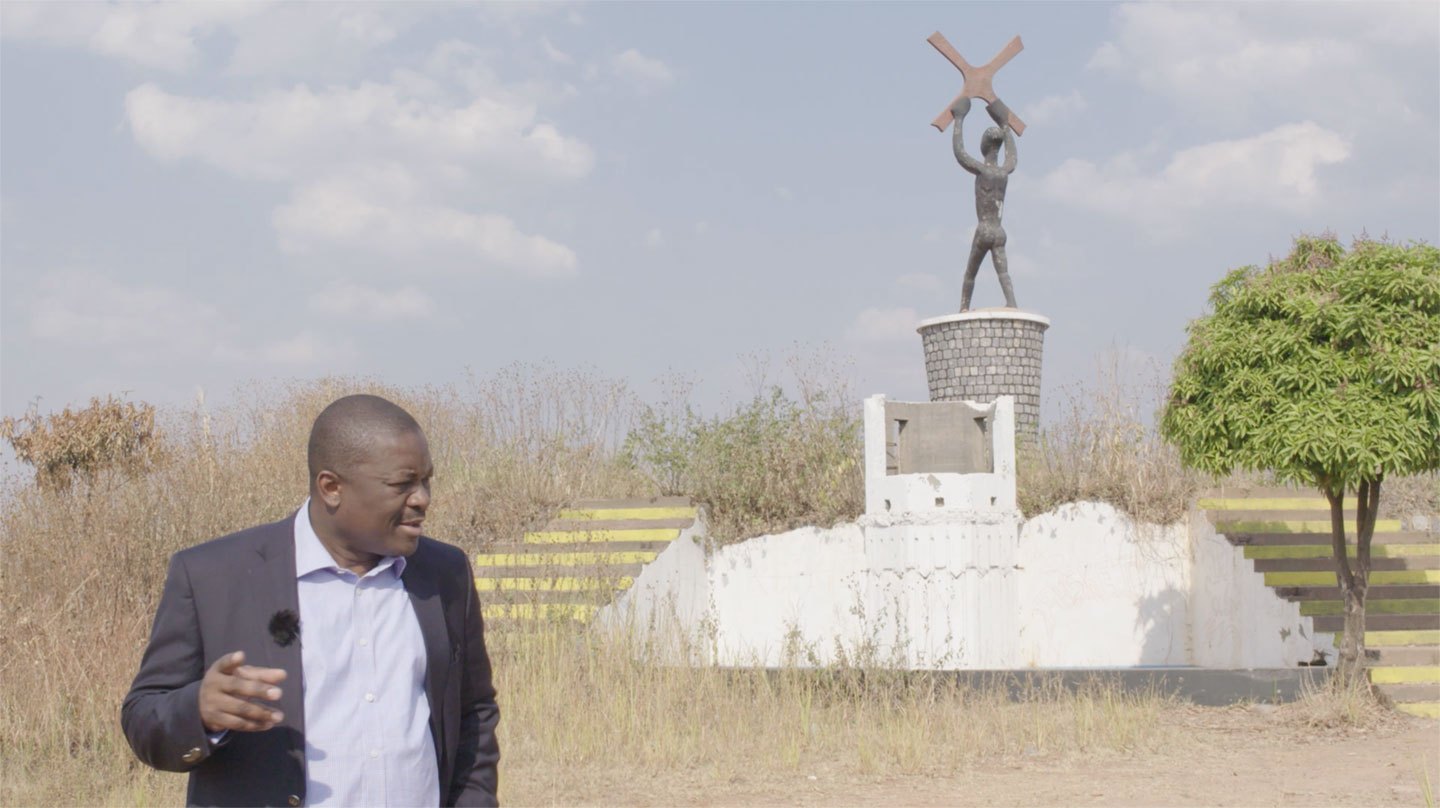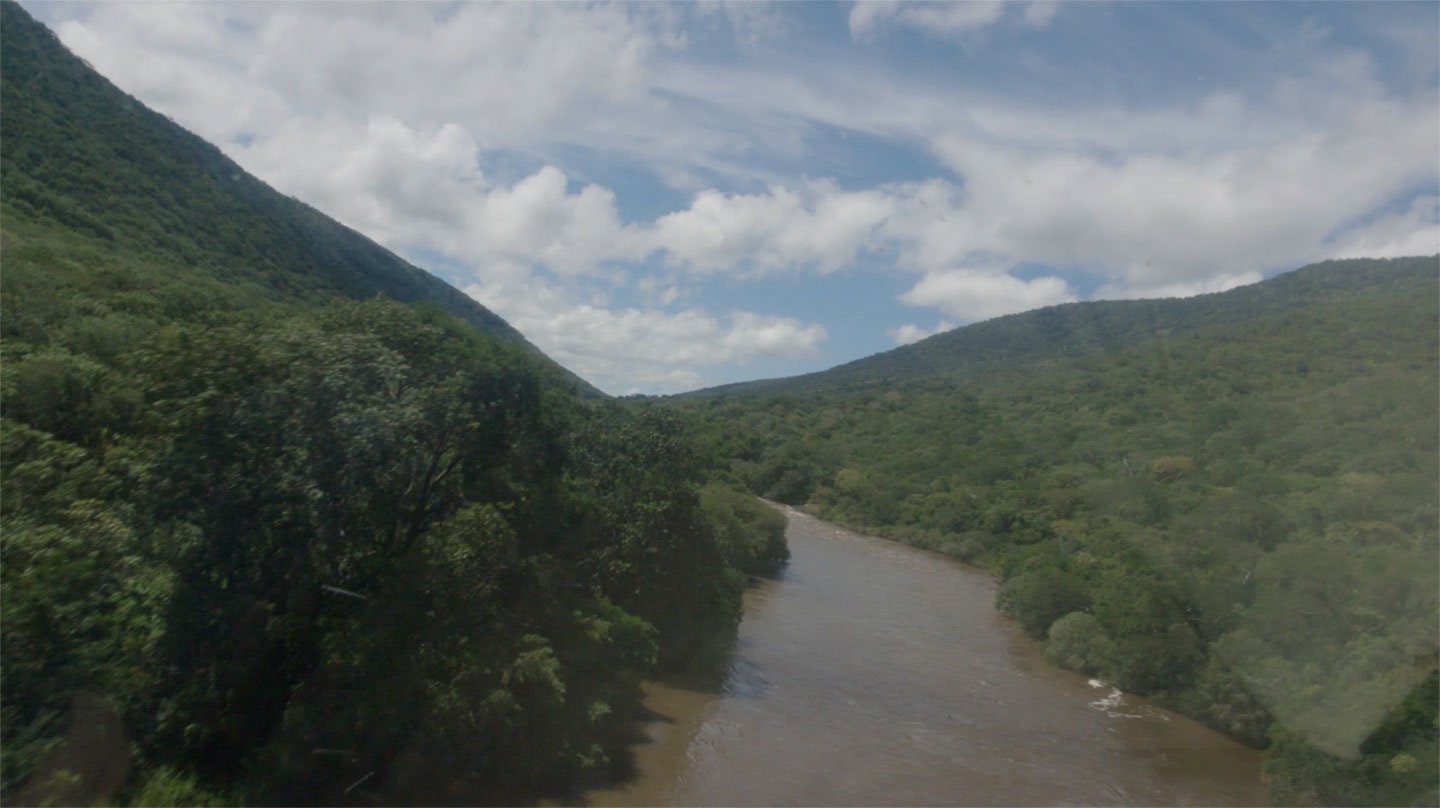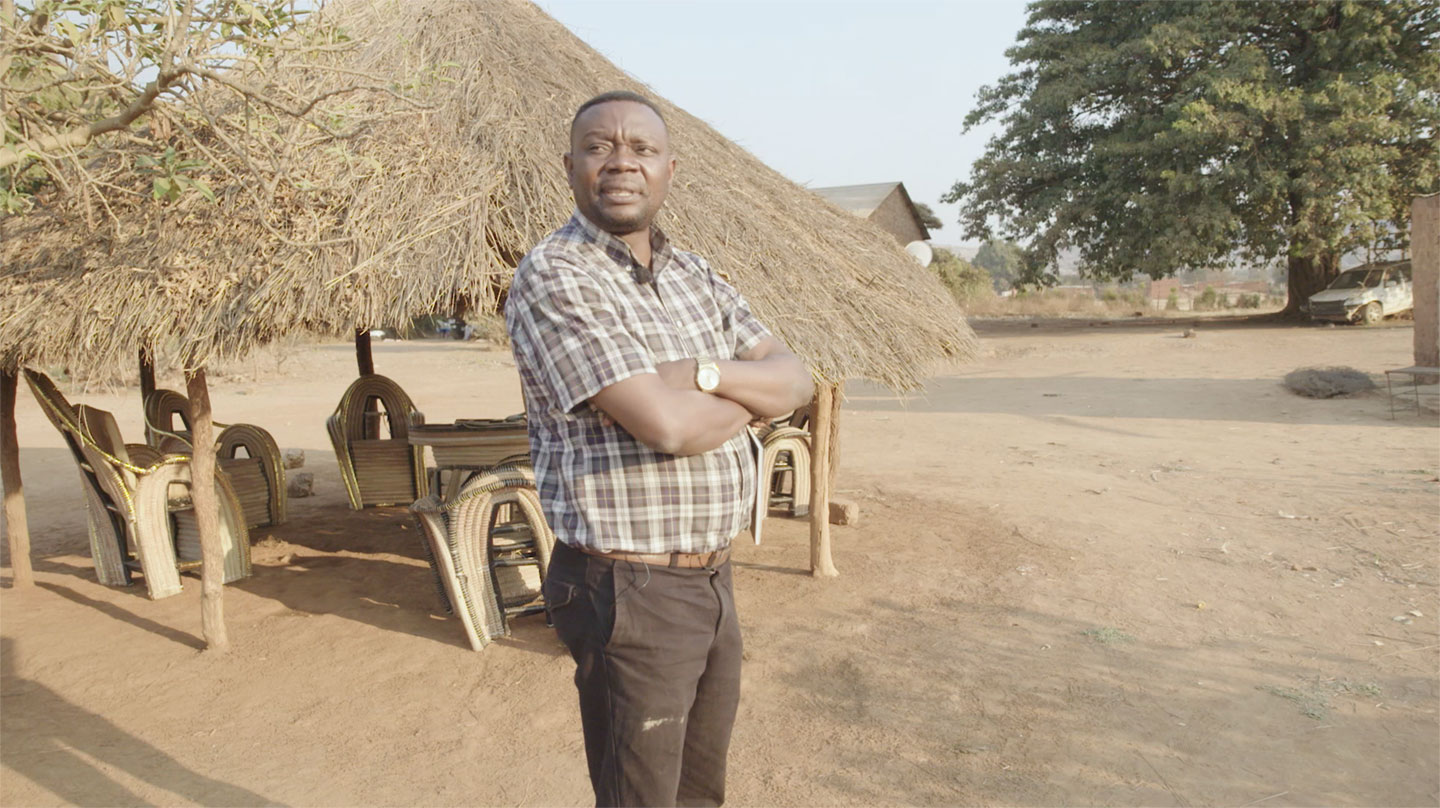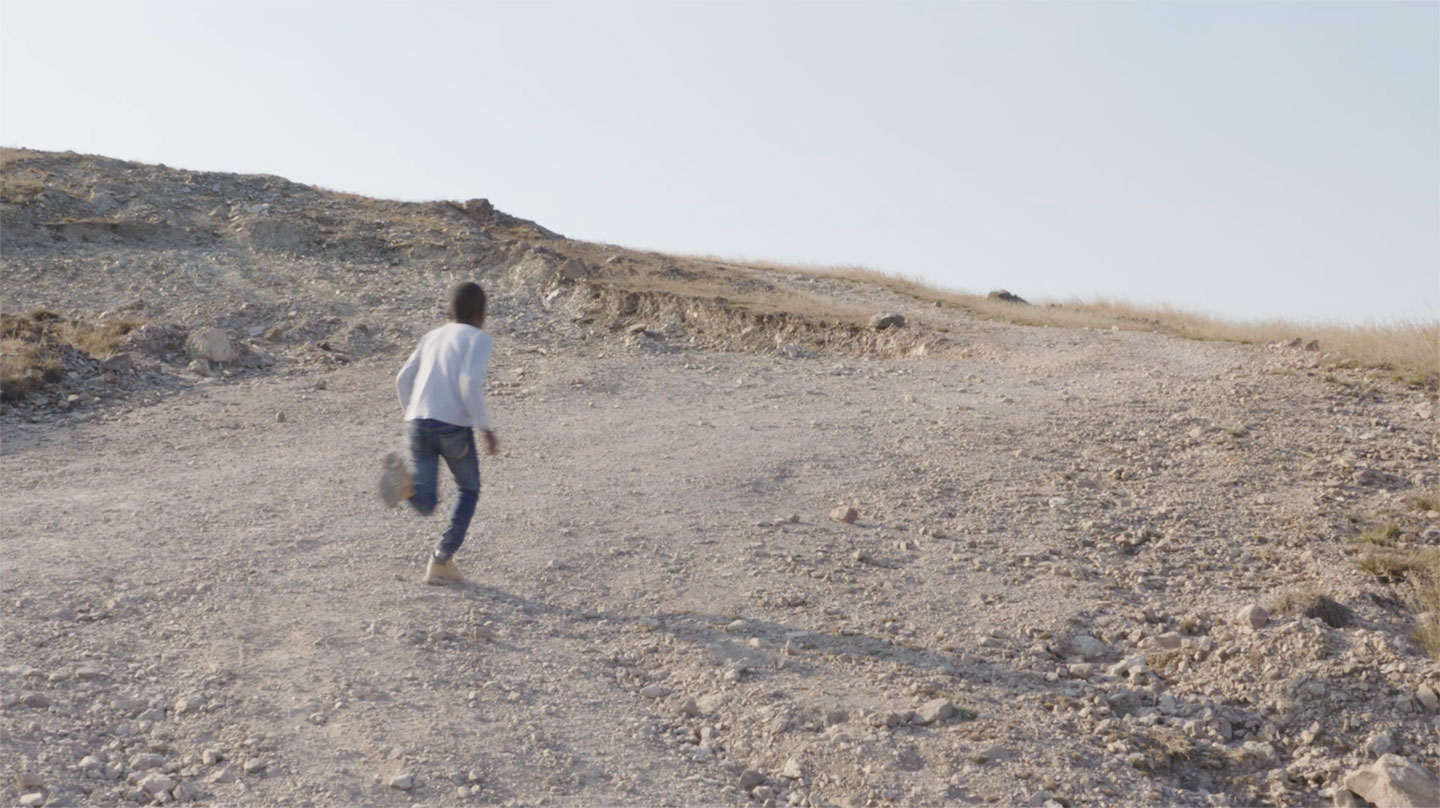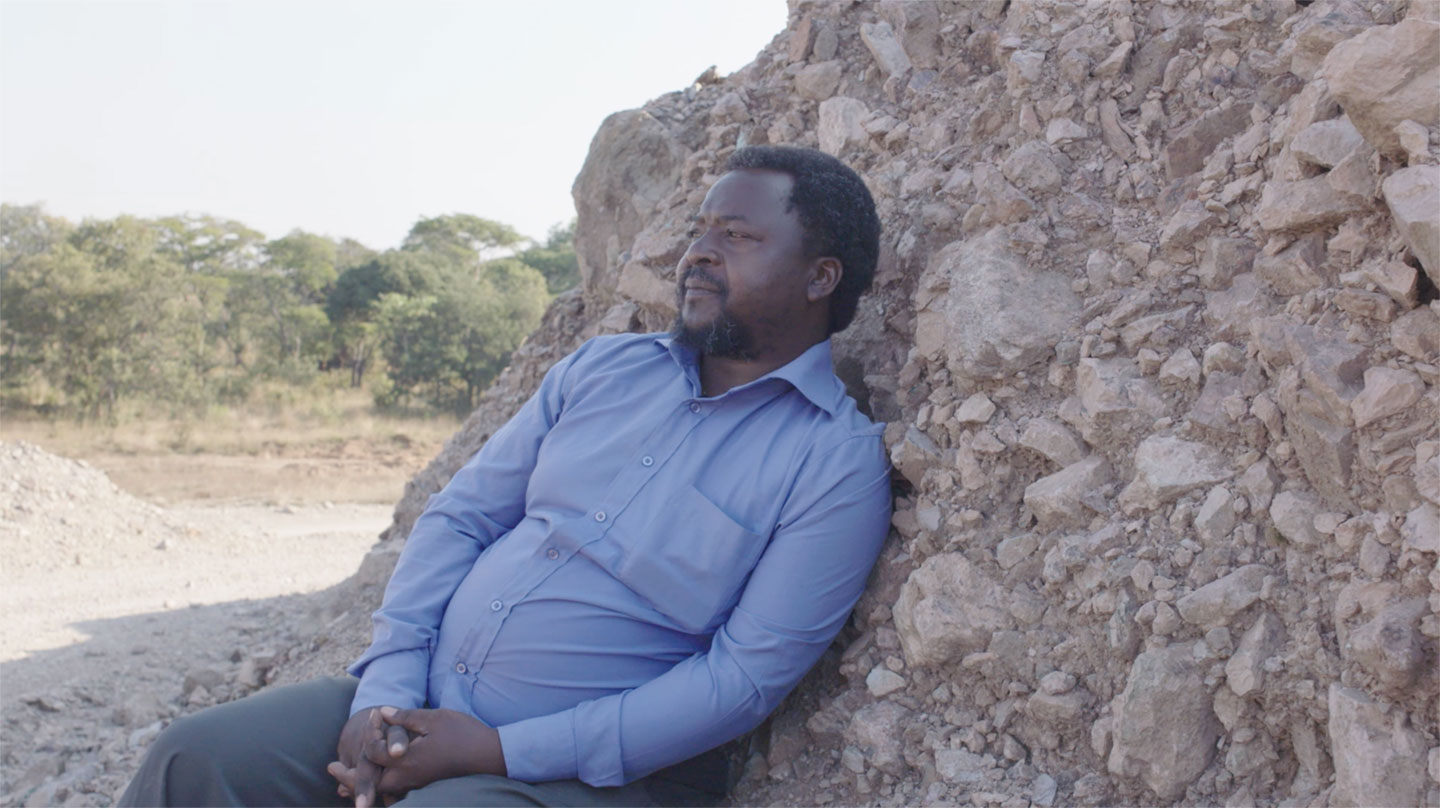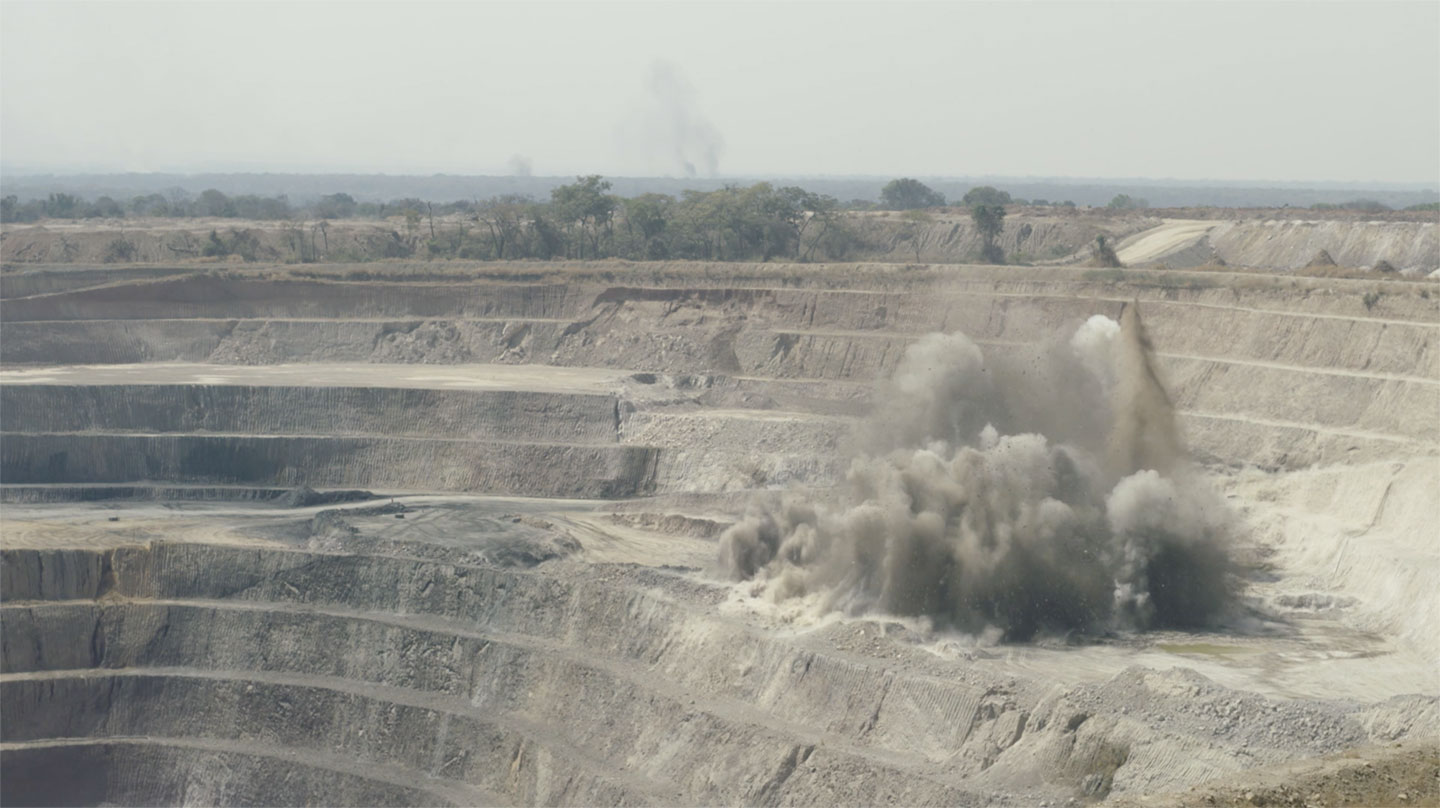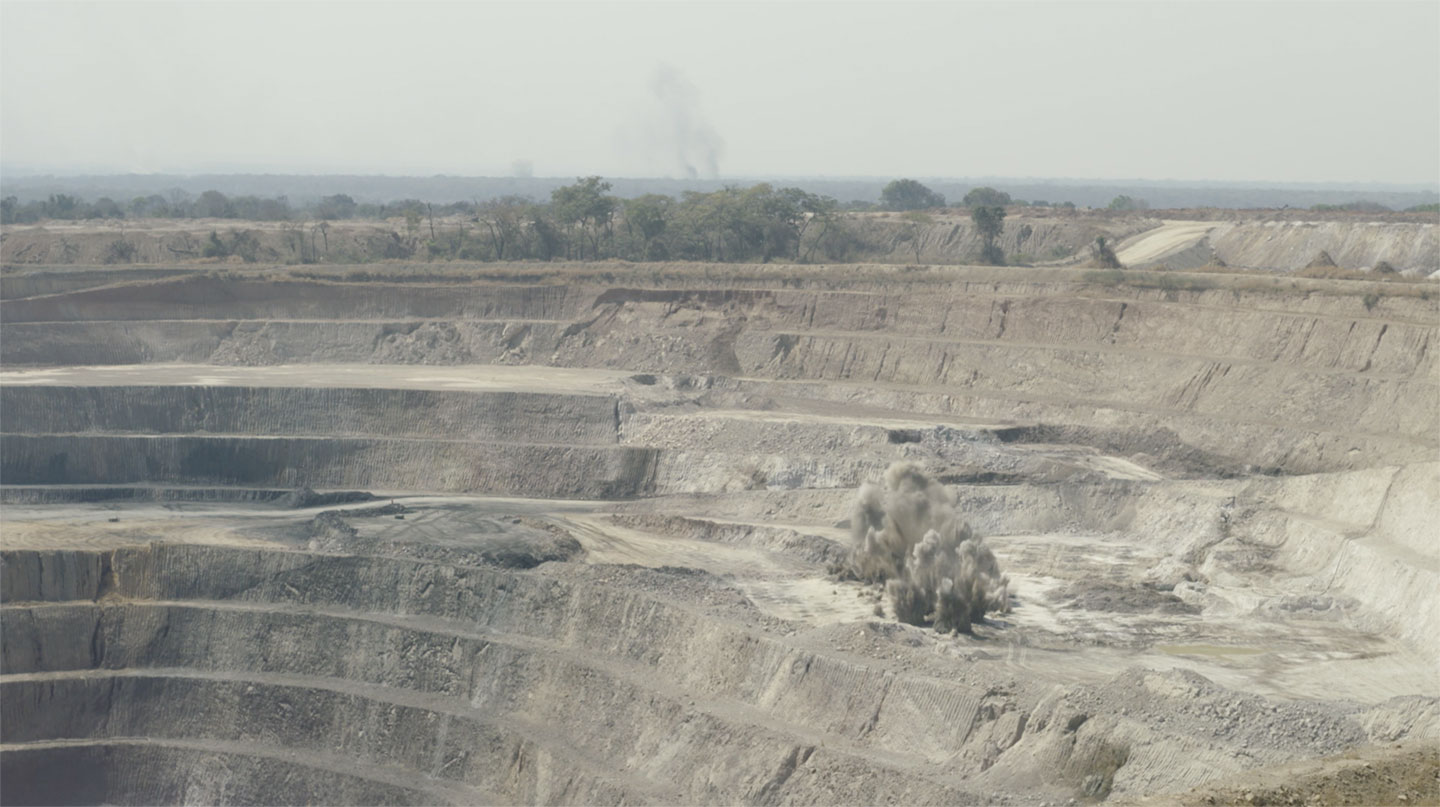Land has been the focus of a couple of your films such as Landscapes by the book (2015), where you looked at the alteration of landscapes through flooding and highway construction, Misty Clouds (2011), which juxtaposed broader environmental questions with the experiences of people living under extreme pollution or Alnaelva (2012), which dealt with urban development in Oslo’s Eastern river valley. Was there a specific moment or reason that made you focus on land?
I grew up in the countryside on a farm outside Oslo. As a teenager, I became active in the environmental movement of the early 1990s. Those two aspects are still relevant for my work.
YM: What do you seek to visualize and to mediate through your works by looking at our natural environments or rather how these are affected?
BF: I am examining how alternations in the landscape affect our lives and I try to understand the political and historical aspects that lead to this. A territory as much as a landscape is not an objective site. It is touched, it is transformed by human behaviour, war and conflicts. The way we are looking at a landscape reproduced in pictures is therefore a political view that represents different interests. We can go back to the beginning of the landscape painting where this gaze was introduced.
YM: Land and the unearthing of natural resources is a basic theme impacting histories and societies in the most various contexts – from (colonial) plundering and greed as well as hope for a better life to today’s capitalism and neo imperialist structures, as well as to the basic support of specific communities. It is therefore coherent that you have looked more specifically into mining in different geographical contexts. What are the common threads and what are the differences in the processes and histories you observed through and in your works?
BF: We find the same issues everywhere we find mining or exploitation of natural resources. Isolated copper or any natural resource is a commodity, a part of an economy and technology. If we look at it through legislation it goes into numerous contexts: Global economy, politics, demography, geography, history, migration, wars, and so on. The legalisation becomes a multifaceted prism. The intentions for a law are to protect the state, local peoples’ interests and perhaps development. The law is a fundamental instrument for any society, but the law in itself is no guarantee for justice. This is as much the case in regards to new mining sites in the North of Norway as in the Democratic Republic of Congo (DRC) or China.
YM: Your latest project Mangeurs de Cuivre (2016), which is part of the Biennial of the Moving Image, deals with mining in Katanga, an Eastern region of the DRC. Why did you want to shoot there?
BF: I already made a film in Katanga in 2013 commissioned by the Lubumbashi Biennale in 2013. I decided to continue working on the issues raised in Code Minier because I learnt a lot while shooting it. So I decided to continue doing research and develop a second film about industrial copper mining in the Katanga province.
YM: You have been very persistent to get the film finished over the course of several years. What motivated you to stick to this rather complicated context? Can you also say something about the initial ideas you had about this film?
BF: Most of my films take years to finish and I sort of need this long process. The longest part is the research. I don’t exclude anything that may interest me. It takes me a while to understand the material and how to transform it into a visual language.
Another side of this project has been the funding. It was not easy to convince the Norwegian funding institutions to support a film about industrial copper mining in the South East of DRC.
The initial idea of the film is to portray the copper mining industry and its history in Katanga from three different perspectives: through the mining company’s social work, through the local business and through the role of a traditional chief. It took me a while to access the situations, to get closer to the people taking part and to learn more about their roles.
YM: Katanga is among the richest mining regions in the world with cobalt, copper, tin, radium, uranium, and diamonds. There are a number of reasons why there is an enormous discrepancy between the extreme wealth in terms of minerals and the standard of living in that region. It is related to Belgian colonialism, as well as to the self-interest of various parties involved after the independence of today’s DRC in 1960. How did you navigate your way through that complex history and present?
BF: I started to do research in 2012 and it was the first time I visited Lubumbashi and DRC. Since then it has been the main focus of my artistic practice. I have read essential literature and watched films about DRC and the Katanga province. My reading also included numerous reports related to mining and economy written by the World Bank, researchers, academics, and various NGOs. I have attended several mining conferences in the DRC arranged for the industry. And I have a broad network in DRC consisting of several traditional chiefs, journalists, writers, filmmakers, NGOs, artists, mining people, researchers, business people, lawyers, etc. To stay updated I follow people on Twitter. Mining and DRC is my main reason to log into Twitter.
YM: Which aspects of the histories and politics interested you the most?
BF: In my first film I looked into the mining regulation from 2002. The World Bank and the IMF initiated it in the late 1990ies. It was written by Congolese institutions and advised by the industry itself. According to the report it was a necessity to attract foreign investments and multinational mining companies to war ridden DRC so that the extraction of minerals could play a key role in the development of the country. I am interested to see how this regulation is implemented and the impact of it.
YM: How did you decide which approach towards the topic would work, as you once mentioned that it was clear you wanted to neither produce an activist nor a stereotype film about mining.
BF: My intention is to look at the mechanisms behind the visible (for example the legislation, the history). Through my visual language and methods I try to tell stories that provide other perspectives or access to a reality. My background is visual arts. I am not trained as a journalist or documentary filmmaker. I make all my films as independent productions. I have no producer and there is no slot on TV that my film shall fit into. This gives me freedom, at least I like to think so.
YM: Several layers define Mangeurs de Cuivres, which are reflected in documentary, fiction and artistic elements. What connects these elements is firstly that you were looking for different ways of collaboration as a method for the film – could you explain what exactly that means?
BF: All the collaborations leading to my films create, to me, an interesting dynamic. In Code Minier I collaborated with two Lubumbashi-based writers. They wrote five scenes about the history of copper in Katanga. Some dialogues were written for a specific symbolic location and some as comments to the history as well as today’s situation. This was the same approach for Mangeurs de Cuivre. Here we focus on one history: A legend about spirits that live in the earth controlling the amount of minerals.
YM: A further thread going through all parts of the film is the question: How do people communicate? This might sound rather general. Could you elaborate how this is relevant in the film?
BF: I focus on the meeting between the mining company and various other stakeholders of the concession. In which way do they speak to each other? How do they explain their activity to avoid conflicts? When the different parts talk, the situation today and the historical past evolve. It is there between the lines all the time. When I am editing I listen to the rhetoric in those encounters.
YM: When you talk about communication, I wonder whether it is also about approaching the issue of mining with empathy not only for those who have suffered and still are suffering from greedy politics of the past and present in Katanga, but also towards those who are mining today, the Australian company MMG. Would you agree? If yes, is empathy and communication therefore also a tool for you to find a way for a counter narrative that goes beyond a stereotyped, activist film?
BF: Yes, I agree. Because my idea is to look into how they work together as this relation reveals the situation in Katanga and its history though their encounters. The mining company and all the other stakeholders in the mining area are very well aware of the law and theirs rights (and the historical past). I try to look at how they negotiate, how they try to respect each other to avoid conflicts. I try to show why there are conflicts, different interests, and to what this can lead. But in my film you will only find peaceful situations, no guns, no blood. And still I think these meetings can mirror the situation in DRC in general. I try to describe the situation, so we can understand the reason and various layers of conflicts.
YM: At the same time I wonder whether it still is an activist film exactly because you were looking at these alternative ways of examining the topic?
BF: I have no explanation for what a classic activist film actually is. I like to watch these films. They are important and we need them. However, I think about an activist film as a film that has one polarised agenda: The bad guys and the good guys. These types of films help to highlight conflicts so we can understand them better. I try to look at the complexity and rather think about storytelling as a series of micro stories. I want to put the level of conflict on a philosophical level. I rather raise new questions, than answering my own. By working so long, my first idea or understanding changes sometimes because I learn new things, then I have to change the stories to.
YM: Was it relevant for you that this should be a film to be screened in Europe as much as in Katanga while you were producing and editing it? Do you want it to be a film that reaches beyond a “classic” art audience so that it is also accessible and relevant for “non-arts” people in Europe as much as in DRC? I am asking that due to its topic and due to your motivation to shoot it. But also because I wonder how much thinking about an audience might drive decision making during the editing process. Obviously people in Katanga would for example need less “background” information than a European audience.
BF: It is important that this film is relevant for a DRC audience. I don’t think this film is made for a specialised audience in Europe. Code Minier was first shown in Katanga at the Lubumbashi Biennale in 2013. I was nervous that the audience would not find it interesting. But I got good feedback from the Lubumbashi audience. I want the film to work for both: the “classic art audience” and for anyone interested in any country.
As for the background info: I discussed this in Lubumbashi during my 4 months stay. We have worked on it to balance the amount of information, so it works for all kinds of audiences.
YM: In relation to that I would like to come back to the three formal elements of the film: documentary, fictional and artistic. What defines these different elements or maybe even episodes and what happens?
BF: The documentary parts happen when I follow people, observe or make classic interviews. When you see them you immediately recognise this as documentary. The fictional parts are filmed in a certain cinematic language, and you also understand that this is scripted. The artistic parts are my visual language that goes in everywhere and I don’t try to distinguish. At the same time, I don’t want to make the viewers insecure, the editing indicates the combination of the formal elements. This is also important for the people taking part, so that they are aware of my methods.
YM: Who are your protagonists and why/how did you chose them?
BF: I have continued working with two of the protagonists of Code Minier. I know them very well, and we have had a dialogue that started in the first film. Through our meetings the new film developed. They represent very different positions in the mining sector, and this is what interests me. The third protagonist is the mining company. We have also had a relation for three years. I have been open about my project to gain trust. In this process I have shared all ideas, proposals and intentions with them. They also gave me insight into their activity and my project actually developed because of our meetings. We have a common understanding of my focus in this film. The mining company was in fact positive to work with me from the beginning. Maybe because my approach was something they could easily relate to. I chose the mining company as a protagonist because I was interested to go inside, and to learn how they work.
YM: Code Minier as well as Mangeurs de Cuivre are hybrids and cannot really be put into a specific category. Still they are quite close to an anthropological approach. Not only because of you as an “outsider” researching the topic and the protagonists of the film. In many scientific anthropological films a science and fiction cannot be clearly separated. It was, and still is common practice for example to make protagonists perform traditional rituals or to even stage it. In a way this is also happening in your film. So how would you position yourself and your practice in that context?
BF: Most of my works are done by me as an outsider. Even in my film “Where Mountains Fall” from the North of Norway. In this film I am telling the story of two old ladies that used to live on isolated islands in an archipelago. I felt like an outsider when I first arrived there. I worked on this film for 7 years, and I stayed with the ladies when I was working there. Many of my methods are the same as an anthropologist. On the other side, my research is not following an academic structure or fulfilling a pre-defined school of thinking. I define my own paradigm, which I like to understand as a mix of different methods and disciplines.
